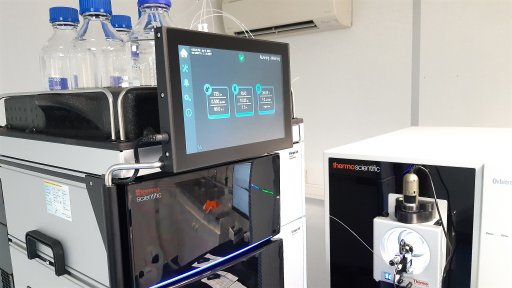 Mass spectrometry is a physics analytical technique that detects and identifies molecules by measuring their mass, and characterizes their chemical structure. Its principle is in the separation of charged molecules in an electric field in function of the ratio mass/charge (m/z)
Mass spectrometry is a physics analytical technique that detects and identifies molecules by measuring their mass, and characterizes their chemical structure. Its principle is in the separation of charged molecules in an electric field in function of the ratio mass/charge (m/z)
A mass spectrometer is made up of one ionisation source which ionizes and sprays the components, one m/z analyser (MS analysis) or one analysers combination (MS/MS analysis) , one ions detector and one signal treatment system. These instruments are characterized by their ionisation mode, their mass accuracy and their resolution. Some ionization sources ESI Electrospray Ionization) can be directly coupled to a separation method like the liquid chromatography in the order to increase the analysis resolution.
High performance liquid chromatography is an analytical separation technique in function of physico-chemical mixed molecules properties, like hydrophobicity, net charge or steric size. Its principle is based on the affinity difference of a component between a stationary phase and a mobile phase which affinity increases with the processing time. The instrument used is a HPLC chain which includes a pump that pushes the mobile phase in the column, an injector that injects the sample in the column, a column which contains the stationary phase and a detector which in our case is a mass spectrometer.
Positive pressure laboratory to protect samples during extraction.
Type II Safety cabinet to work microbial strains.
High resolution mass spectrometers.
High-performance liquid chromatography chain at micro and nano flow.
Multi dimensional liquid chromatography
Bioinformatics
Mass spectrometry
Mascot, Skyline and Paragon search engines for protein identification against databases.
Proteome Discoverer for TMT and label-free differential analysis
Marker View for label free differential analysis
Pinpoint Skyline and Multi Quant for targeted experiences optimization and treatment
Bioinformatics and data processing